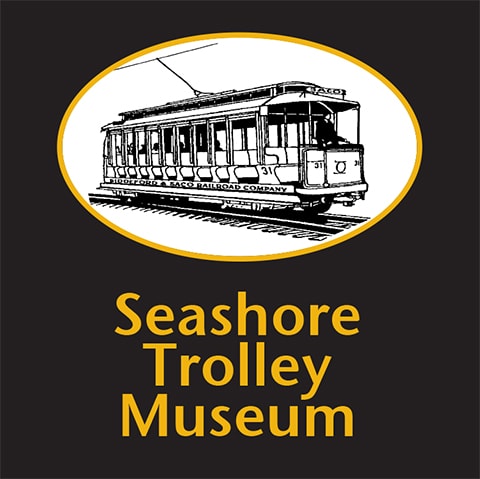Project Sponsor: Phil Morse
Fundraising Goal: $500,000
Questions for Phil? Want to get more involved in the project? Contact Phil at [email protected].
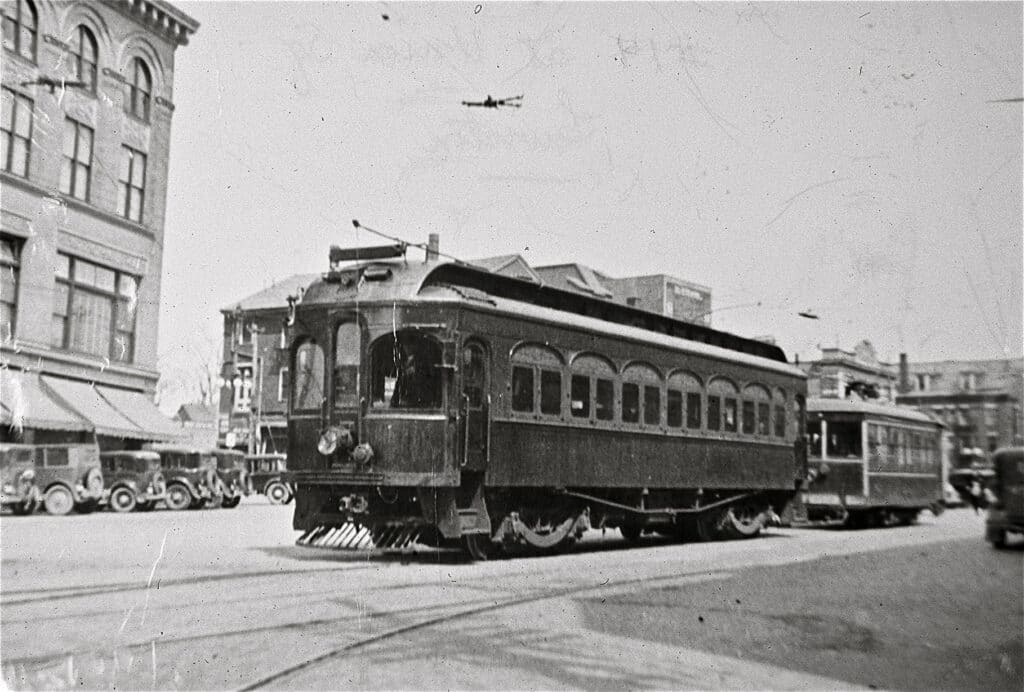
The Narcissus and an Androscoggin & Kennebec Railway Birney car in Union Square, Lewiston, ME on April 6, 1933. Less than three months before the Portland-Lewiston Interurban (PLI) ceased operations. Image from the O. R. Cummings Collection
The completed Narcissus will be a significant component for Seashore Trolley Museum to market itself locally, statewide, regionally, and nationally. Like no other railway vehicle in the collection, a beautifully restored, operating Narcissus will provide numerous powerful opportunities to promote and strengthen the Museum’s “brand” exponentially.
We have already raised over $500,000 to fund the Narcissus’ restoration, and another $500,000 is needed to complete the project, which includes getting this vehicle in operating condition once again. Donate today and designate your gift to Fund 816.
History of the Narcissus
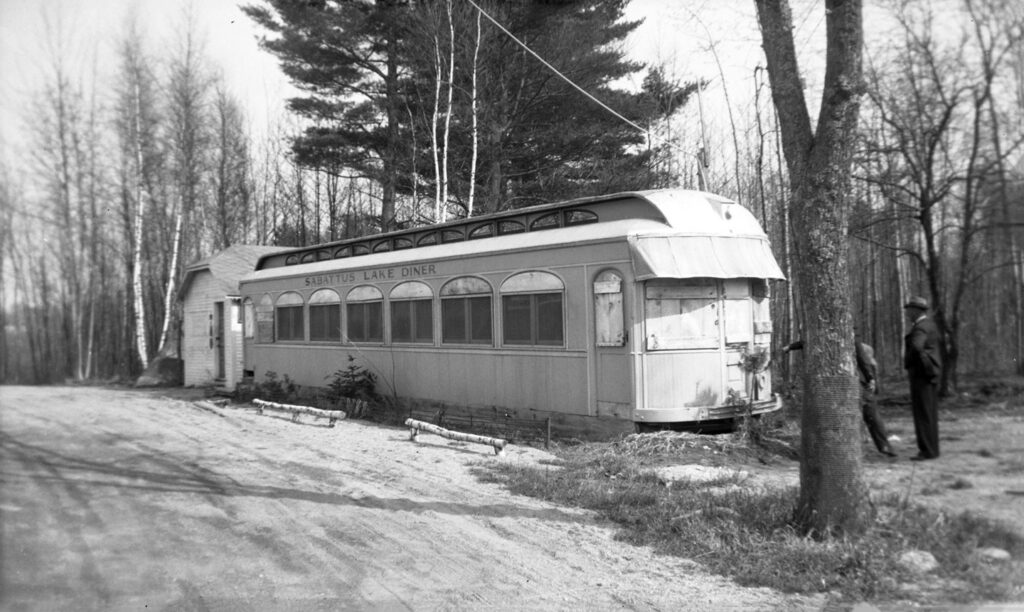
Former PLI No. 14 Narcissus at Sabattus Pond (Lake) during A & K St. Rwy Fan Trip 04/20/41. Photo by John Coughlin in the Kevin Farrell Collection at Seashore Trolley Museum.
The Narcissus is the sole surviving high-speed wooden interurban from the legendary Portland-Lewiston Interurban (PLI). The PLI, known as the “finest and fastest in all New England,” operated between the two major population centers in Maine from 1914 until 1933 and had the honor to have Theodore Roosevelt as a passenger on August 18, 1914. The Narcissus is listed in the National Register of Historic Places and is currently under restoration in Seashore Trolley Museum’s Restoration Shop.
Built in 1912 in Laconia, New Hampshire at the Laconia Car Company Works, this high-speed, wooden electric interurban coach with its exquisite mahogany interior, is resplendent in copious ornamental brass components, forty ornate leaded stained glass windows, and center ceiling panels embellished with gold leaf fleur-de-lis. The main passenger compartment is adorned with green plush Mohair upholstered, reversible seats on both sides of the aisle. This luxurious railcar has a seating capacity for 52 passengers and is renowned for achieving speeds in excess of 70 mph.
After public operations of the PLI ceased in 1933, the body of the Narcissus was sold to an individual, transported to Sabattus, Maine, and placed on a piece of property near Sabattus Lake. After a few years of dormancy, the Narcissus body was moved a short distance to a different lot near Sabattus Lake. Following a short-lived experience as Sabattus Lake Diner, the Narcissus was purchased by J. Henri Vallee and served as the Vallee family summer camp at Sabattus Lake until an arrangement was made with Seashore Trolley Museum to acquire it. The Narcissus arrived at Seashore Trolley Museum on October 31, 1969.
Narcissus Restoration Efforts To Date
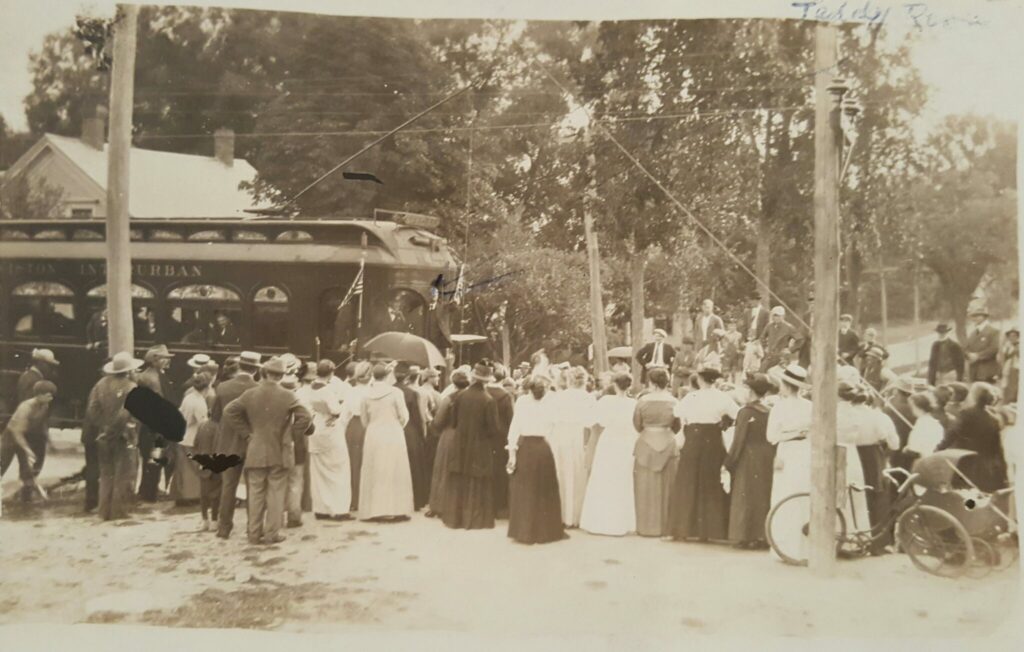
Theodore Roosevelt leaning out of the train doorway of the Portland-Lewiston Interurban No. 14, Narcissus, as he addresses the gathered townsfolk in Gray, Maine on August 18, 1914. Image courtesy of Gray Historical Society
A search for mechanical and electrical components required to operate the historic railcar began in earnest in the mid-1960s. The acquisition of these rare parts, many originally installed in 1912, most often resulted in acquiring candidates that were a close approximation of the original. Our skilled staff and volunteers continue the arduous tasks associated with analyzing acquired replacement components to provide options for the best steps to a successful restoration.
Starting in the first months of 2021, work on the Narcissus will focus on preparing vestibule and passenger compartment structural components in advance of installing the two recently prepared side sills and their adjoined steel channels. Before the installation of the sills can take place work will need to be completed on vertical timbers, cleats/ledgers, needle beam timbers, the bulkhead separating the smoking and main passenger compartments, upper, lower, vertical and horizontal truss rods, and both bolsters. Additionally, windows, seat castings, and vestibule roof ribs will receive attention.
Later in 2021, as future funding allows, work to be considered would include continuing to refurbish the two HL-15B controllers and the Westinghouse Multiple System-8-unit switch box, along with preparing roof boards for installation. Meaningful progress with all these tasks in 2021, complemented with sufficient funding, will lead to the first major progress towards the visual appearance of the treasured PLI icon and the installation of exterior materials to enclose the timber framework of the Narcissus.
Learn More About the Project
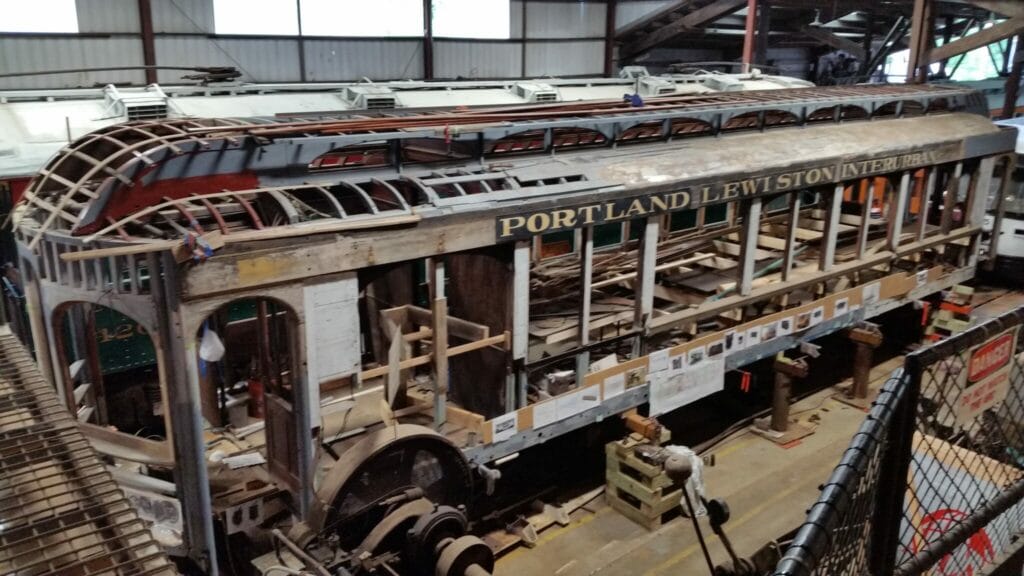
The Narcissus in the Donald G. Curry Town house Restoration Shop on July 24, 2020. Phil Morse photo
To learn more about this project and for updates on our progress, visit: https://narcissus1912.blogspot.com
And designate your gift to Fund 816
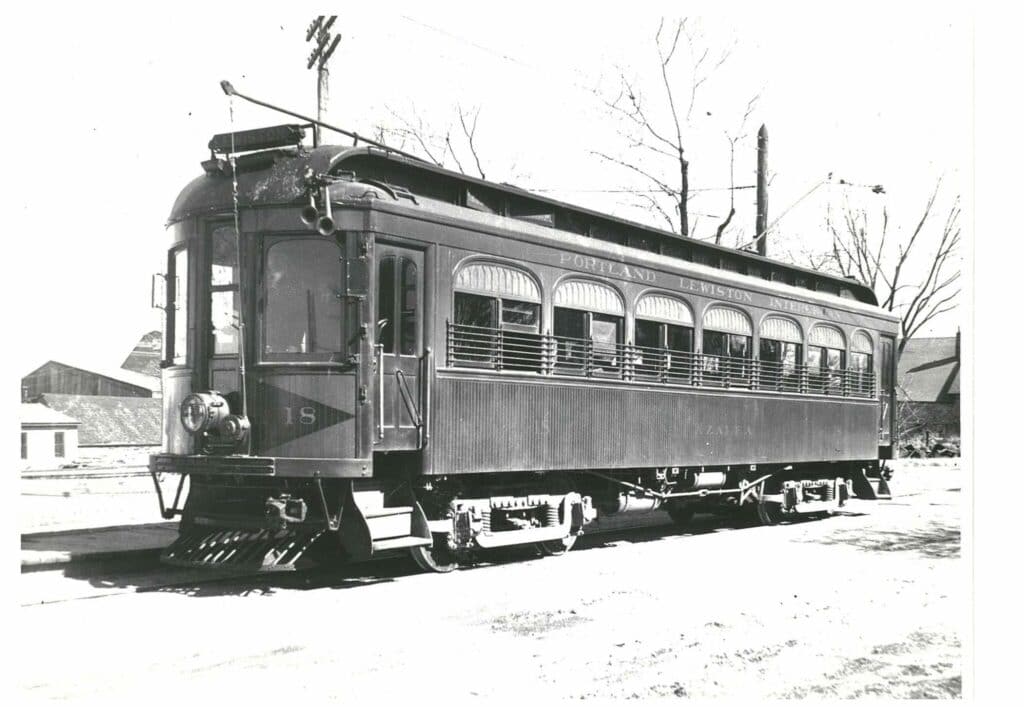
Sister car No. 18, Azalea. Seashore Trolley Museum collection.
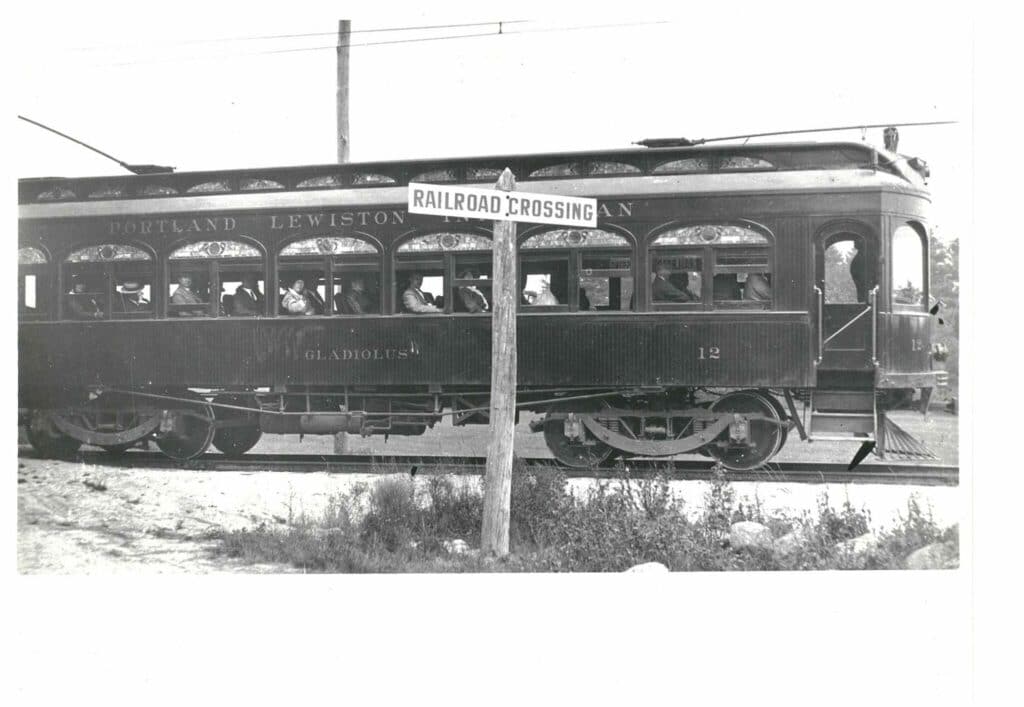
Sister car No. 12, Gladiolus. Seashore Trolley Museum collection.
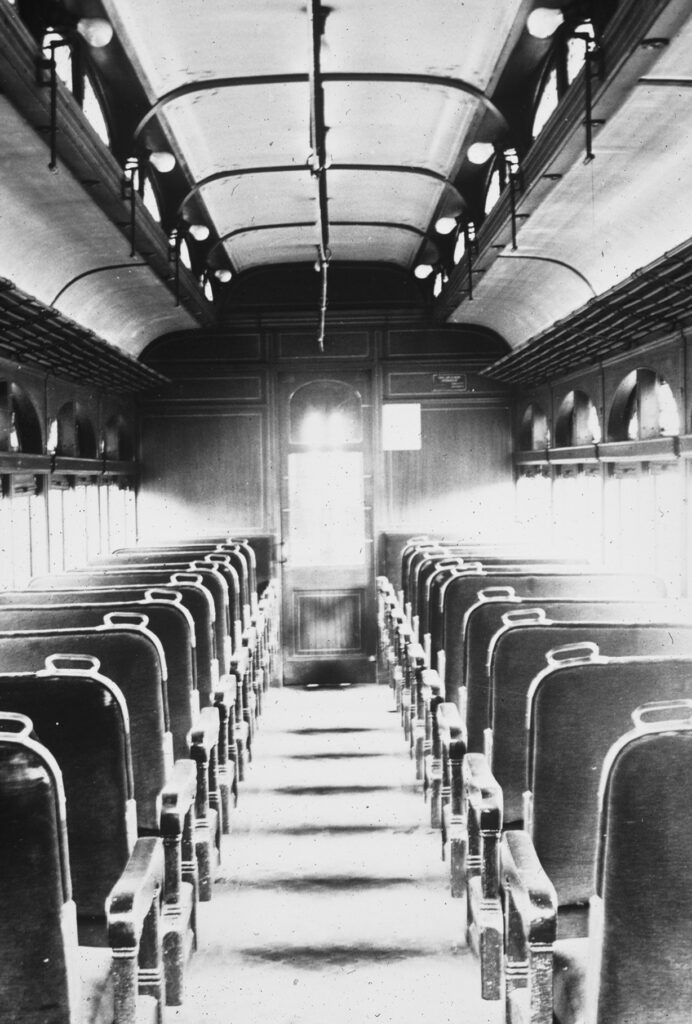
Interior looking at the decorative inlay embellishing the mahogany bulkhead doorway leading to the smoking compartment on the number 1 end of the Arbutus. This interior of the passenger compartment is identical for the Narcissus. Details visible include; the interlocking tiles on the floor, the finely crafted mahogany arm rests of the green plush Mohair reversible seats, the ornate, arched, leaded stained glass windows trimmed with mahogany, and in the corners of the center ceiling panels, the delicate gold leaf fleur-de-lis. Image from the O. R. Cummings Collection
